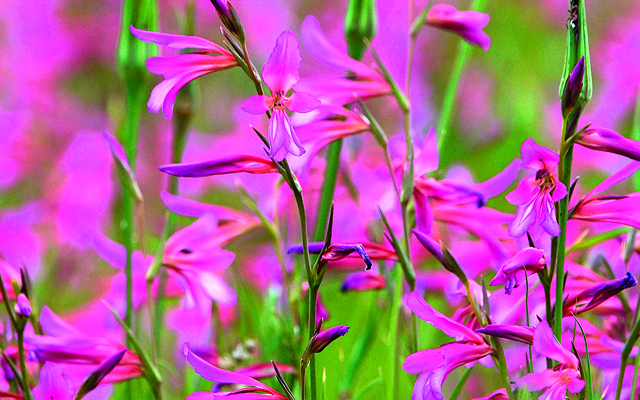How to grow fritillaries
Botanical artist and Fritillaria specialist Laurence Hill reveals his top tips.

There is something about the genus Fritillaria that faintly alarms many gardeners. The fact that there are so many garden-worthy species should be an attraction, but merely seems to spread doubt and confusion. Then, there is the suggestion that they’re difficult to grow and therefore best left to the specialist.
Let me, then, be clear. There is nothing to worry about. Specialist Laurence Hill advises:
- The single most important aspect of growing fritillaries is the growing medium, which should be both free draining and moisture retentive. I use a mixture of loam-based compost, grit, humus (leaf mould or bark) and Perlite.
- Fritillaria meleagris the snake's head fritillary that occurs in some water meadows of the Thames valley, is best sown or planted into moist wildflower meadows and mown in late summer (when grown from seed, it takes four years to flower). It will grow equally well in a damp border, given some shade. Fritillaria montana and F. pyrenaica can be planted in similar locations.
- Fritillaria persica and the statuesque F. imperialis, with its exotic pineapple-like plumage, are good for spring borders, although Beth Chatto grows crown imperials successfully under the eaves of a mature oak tree.
- For the border, try F. elwesii, F. pontica and F. uva-vulpis, which are easy to find from online nurseries and tolerate our variable summer weather. Those suited to both the border and the rock garden include F. acmopetala, F. bithynica and F. thunbergii. F. orientalis should be sited in a raised bed as the stems have a habit of leaning.
- If attempting trickier species from the Mediterranean, F. forbesii from Turkey for example, or F. biflora, from southern coastal California, you may need a glasshouse to shelter them from the winter frost and summer rain; similarly, F. aurea and F. gibbosa require very careful watering during the cold months although they're fully hardly.
Where to buy bulbs Pitcairn Alpines: 01738 583 213; www.pitcairnalpines.co.uk Janis Ruksans: rarebulbs.lv/index.php/en/ Jacques Amand: 020 8420 7110; jacquesamandintl.com
Where to get seeds Fritillaria Group of the Alpine Garden Society (www.fritillaria.org.uk): members only, but wide variety of inexpensive and often rare species . Allow five years to flower from seed.
To view Mr Hill's unique plant database for botanists and enthusiasts around the world visit: www.fritillariaicones.com

Why Mediterranean flowers lift the spirits
David Wheeler explores the abundant flora of Cyprus.
Join us in the Italian gardens of Russell Page
Visit northern Italy's horticultural treasures on the Country Life Italian-garden tour.
Exquisite houses, the beauty of Nature, and how to get the most from your life, straight to your inbox.
Country Life is unlike any other magazine: the only glossy weekly on the newsstand and the only magazine that has been guest-edited by His Majesty The King not once, but twice. It is a celebration of modern rural life and all its diverse joys and pleasures — that was first published in Queen Victoria's Diamond Jubilee year. Our eclectic mixture of witty and informative content — from the most up-to-date property news and commentary and a coveted glimpse inside some of the UK's best houses and gardens, to gardening, the arts and interior design, written by experts in their field — still cannot be found in print or online, anywhere else.
